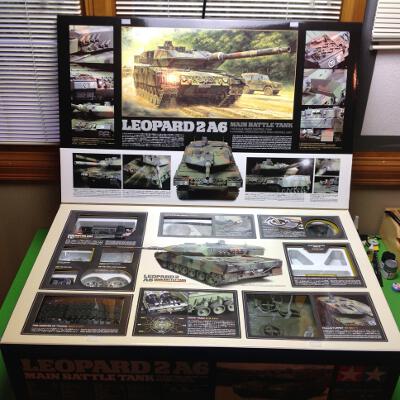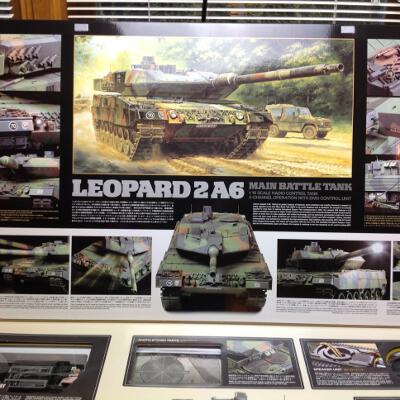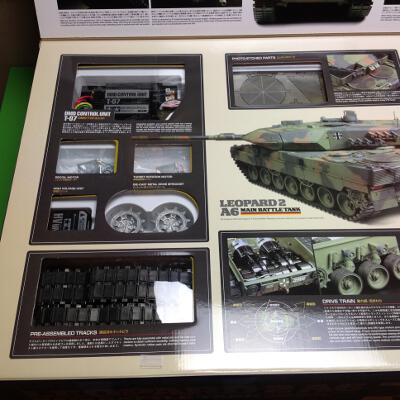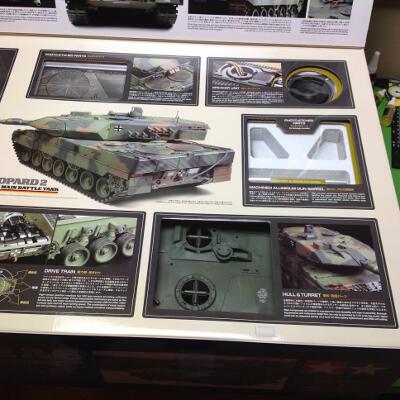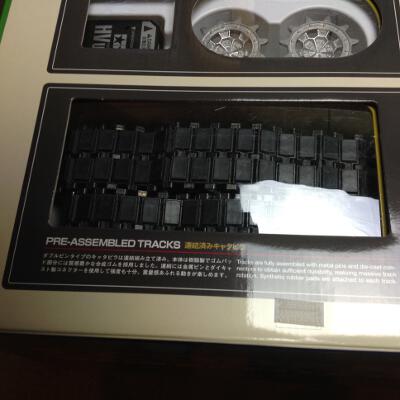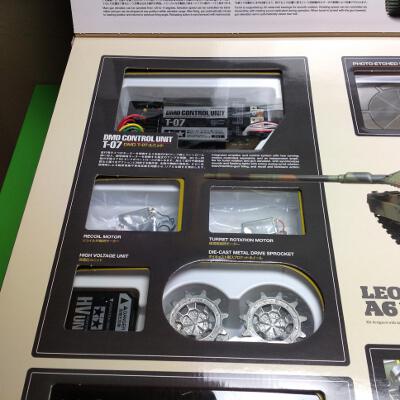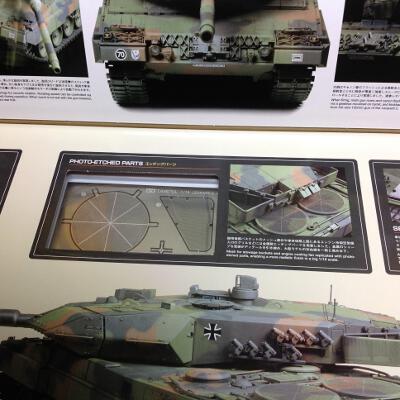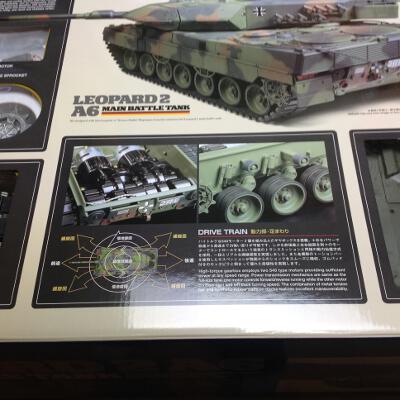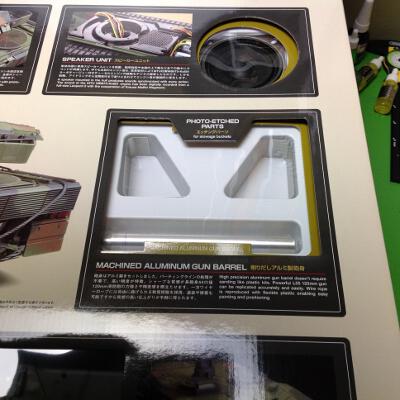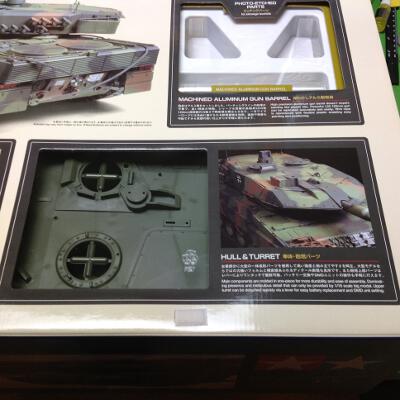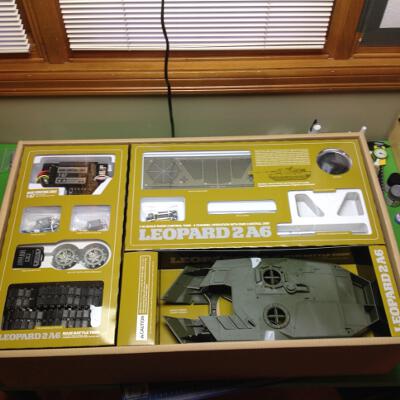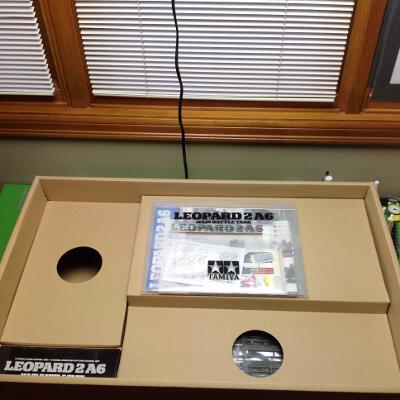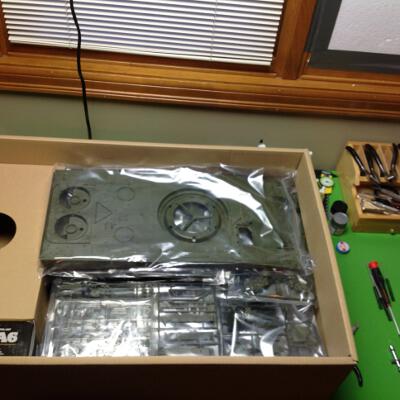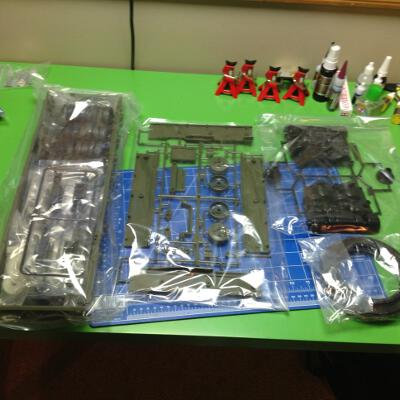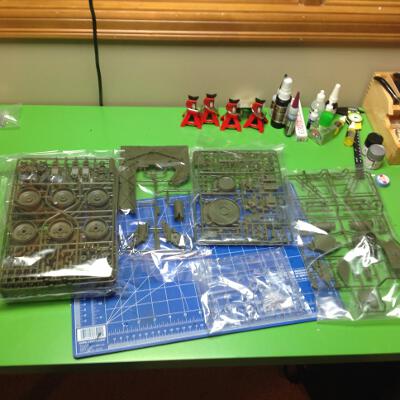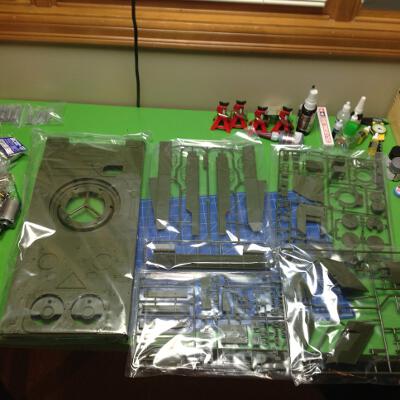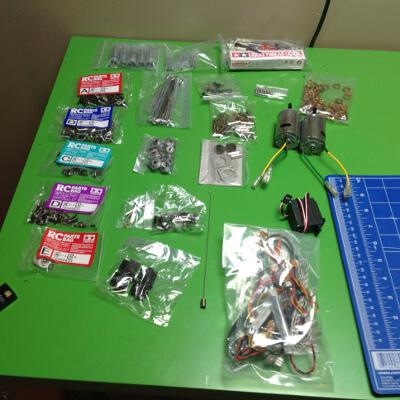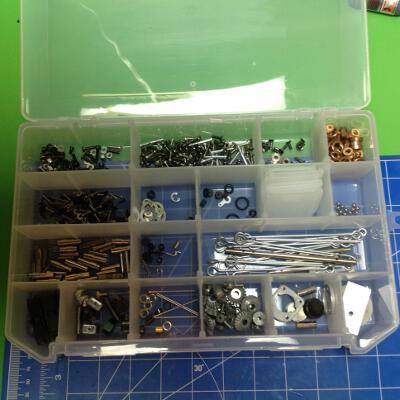I don't usually like to spend a lot of time and effort describing the
"unboxing", but this model is an exception as you will see. There is a
lot to see in this box and Tamiya really put a lot of effort into
showcasing the model, not just containing it for shipping.
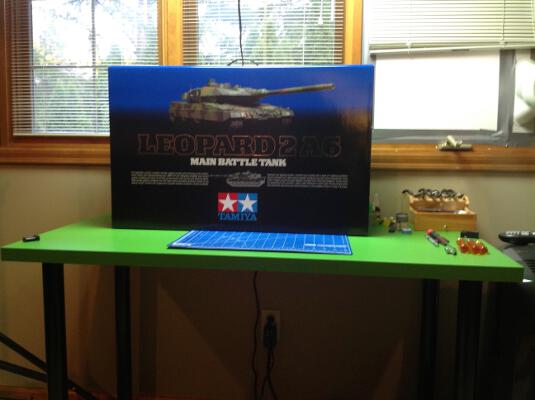
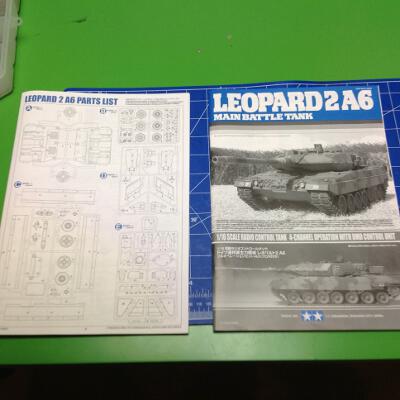
Finally, the instruction manual. The manual
came in its own thick protective plastic folder along with a decal
sheet, a painting guide, and a parts list. The parts list is a
separate pullout section for reference so you can easily look up the shape
and size of any part you might be looking for. Tamiya really
worked hard to make this as logical and organized as possible.
After the usual introductory section covering tools and supplies needed
as well as safety warnings, the manual begins with a fairly extensive
section on the history and properties of the real German Leopard
tank. This is presented is 3 different languages (Japanese,
English, and German) and includes a page of statistics. There is
also a full page labelled diagram with 30 named parts of the real
tank. The building instructions don't finally start until Page 12.

